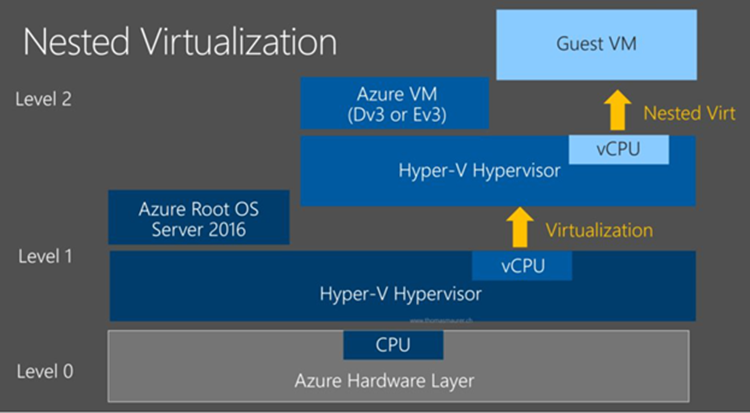
Microsoft users will now be able to enable nested virtualisation nested virtualisation in Azure in a larger variety of sizes.
The Redmond company announced the coming support for Dv3 or Ev3 series at its Build event last month, with the company now deciding to enable nested virtualisation for both the virtual machine sizes.
What this means is that developers are able to do more than just create a Hyper-V container with Docker, as by also running nested virtualisation it is possible to create a VM inside a VM.
The reasons for doing this could be to create flexibility when it comes to supporting the needs of development, testing, customer training, and demo.
Read more: VMware vRealize updates target value for money from hybrid cloud investments
Microsoft said in example that a testing team using Hyper-V hosts on-prem could move their workloads to Azure by using nested VMs as virtualised test machines. The nested VM hosts can then be used to replace physical Hyper-V hosts.
The company wrote on its Azure blog: “Let’s look at another example, suppose you want to run your development code, tests or applications on a machine with multiple users on it without impacting them, you can use the nested virtualization technology to spin up independent environments on demand to do that. Within nested VMs, even if you are running a chaos environment your users will not be impacted.”
Read more: Cloud wars: Object storage replaces VMs as new battleground for AWS, Google & Microsoft
The company said that it plans to continue to expand support to more virtual machine sizes in the coming months.






